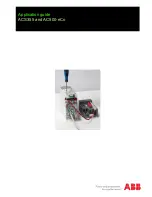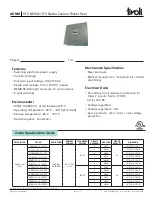
2
MDS 4710/9710 I/O Guide
MDS 05-3305A01, Rev. B
1.2 Applications
Point-to-Multipoint, Multiple Address Systems (MAS)
This is the most common application of the transceiver. It consists of a
central master station and several associated remote units as shown in
Figure 2. An MAS network provides communications between a central
host computer and remote terminal units (RTUs) or other data collection
devices. The operation of the radio system is transparent to the computer
equipment.
Often, however, a radio system consists of many widely separated
remote radios. A point-to-multipoint or SCADA (Supervisory Control
and Data Acquisition) system may be a new installation for automatic,
remote monitoring of gas wells, water tank levels, electric power distri-
bution system control and measurement, etc.
The radio system may replace a network of remote monitors currently
linked to a central location via leased telephone line. At the central
office of such a system, there is usually a large mainframe computer and
some means of switching between individual lines coming from each
remote monitor. In this type of system, there is a modulator/demodulator
(modem) at the main computer, and at each remote site, usually built
into the remote monitor itself. Since the cost of leasing a dedicated-pair
phone line is quite high, a desirable alternative may be replacing the
phone line with a radio path.
Invisible place holder
Figure 2. Typical MAS Point-to-Multipoint Network
I
D
I
A
G
13.8
VDC
P
W
R
+
HOST SYSTEM
REMOTE RADIO
SWC OFF
RTU
RTU
RTU
RTU
I
D
I
A
G
13.8
VDC
P
W
R
+
I
D
I
A
G
13.8
VDC
P
W
R
+
I
D
I
A
G
13.8
VDC
P
W
R
+
I
D
I
A
G
13.8
VDC
P
W
R
+
RTU
MDS MASTER
STATION
CONTINUOUSLY
KEYED
REMOTE RADIO
SWC OFF
REMOTE RADIO
SWC OFF
REMOTE RADIO
SWC OFF
REMOTE RADIO
SWC OFF











































